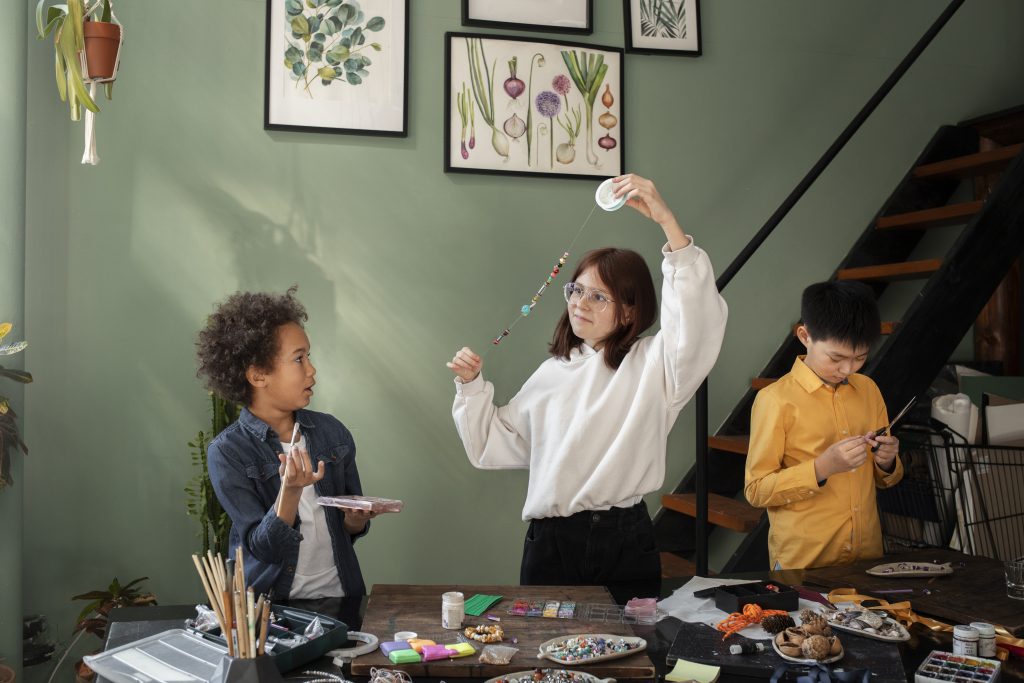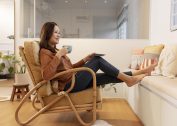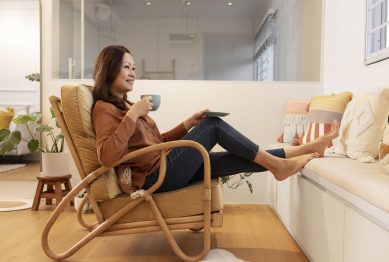Creativity flourishes when people feel supported by their surroundings. In 2025, design is moving beyond simple aesthetics into experiences that respond to our senses and emotions. The emotional creative spaces trend is changing how we think about work areas, homes, and public environments by blending well-being with adaptability. From coworking hubs that adjust to different moods to home offices designed for focus and calm, this approach is redefining what it means to create environments that truly foster innovation.

Why Emotional Creative Spaces Matter in 2025
For years, offices and studios were designed around efficiency: desks lined in rows, fluorescent lighting, and little consideration for how space influenced the mind. Today, research in psychology, neuroscience, and workplace studies reveals that creativity doesn’t just depend on tools—it also depends on how spaces feel. People are more productive, more relaxed, and more imaginative when their environment supports sensory comfort, emotional security, and personal expression. That’s why the emotional creative spaces trend has become one of the biggest shifts in interior design and workplace culture in 2025.
A report on emotional architecture in Australia shows designers using circadian lighting, aromatherapy, and natural textures to encourage calm and creativity. These features were once seen as luxurious but are now becoming mainstream, proving that the connection between environment and mental well-being is no longer optional—it’s essential.
The Shift Toward Fluid and Adaptable Spaces
Another dimension of this movement is flexibility. The era of fixed office design is fading as companies and individuals seek fluid environments that can transition quickly. A space might serve as a collaborative hub in the morning, transform into a quiet retreat in the afternoon, and host a social gathering in the evening. These emotional creative spaces reflect how modern work and life overlap, requiring adaptability.
Examples include coworking spaces that resemble hospitality lounges, offices with movable partitions, and homes where one room can easily serve multiple functions. Wallpaper magazine notes that these hybrid interiors are gaining popularity worldwide because they balance functionality with inspiration.
Core Principles of Emotional Creative Spaces
1. Sensory Awareness
Designers are increasingly layering sensory experiences into spaces. Lighting mimics the rhythm of natural daylight, calming scents like lavender or citrus diffuse through the air, and acoustic panels manage background noise. These features foster focus and prevent sensory overload.
2. Adaptability and Multipurpose Use
Spaces that can change with user needs encourage creativity. Movable furniture, modular partitions, and hybrid zones make it possible to reconfigure an environment on demand.
3. Biophilic Design
Biophilia—the connection between humans and nature—remains central. Plants, natural materials, and daylight create grounding effects that reduce stress while improving focus and imagination. Studies show even simple additions like desk plants can increase productivity.
4. Personalization and Control
The ability to control your environment enhances ownership and creativity. Adjustable lighting, sit-stand desks, and customizable zones help users set the tone for their tasks.
5. Technology Integration with Intent
Smart technology should support—not overwhelm—creativity. Touchless lighting controls, discreet charging points, and integrated sound systems improve comfort without distraction.
6. Artistic and Textural Depth
Art installations, murals, and supergraphics can set the mood for creative flow. Combining layered textures—like rough wood with soft textiles—adds depth and stimulates the senses, further enriching the environment.
Designing Your Own Emotional Creative Spaces
Creating such spaces doesn’t require a large budget or professional designers. Anyone can incorporate these trends into their home office, studio, or shared space. Here’s a practical guide:
- Define Purpose
Decide whether the space is primarily for brainstorming, concentration, or relaxation. A clear purpose ensures design decisions align with your goals. - Choose Lighting Wisely
Natural light is best, but circadian lighting systems can replicate its cycles. Adjustable lamps and dimmers allow you to shift brightness as your energy levels change. - Layer Sensory Elements
Add soundscapes through soft background music, diffuse calming scents, and use tactile furnishings to create balance. - Opt for Multipurpose Furniture
Look for desks that double as dining surfaces, foldable partitions, or chairs that can move easily between settings. - Bring Nature Indoors
Even one or two plants can transform a space. Greenery supports mental health, filters air, and provides visual variety. - Use Art and Texture
Hang bold graphic prints or murals to inspire energy. Combine rough and smooth textures for tactile richness. - Incorporate Personal Touches
Surround yourself with meaningful objects—photos, art, or books—that spark joy without creating clutter. - Keep Tech Subtle
Hide cables, integrate wireless charging pads, and use devices that blend seamlessly into the design. - Test and Adjust
Spend time in your space and take note of how it makes you feel. Adjust lighting, furniture placement, or scents until the space supports your creative flow.
The Broader Impact of Emotional Creative Spaces
The significance of emotional creative spaces extends beyond interior design. They represent a cultural shift in how society views work and life. Instead of maximizing square footage or output alone, the goal is to maximize human potential. Businesses investing in wellness-driven design are seeing improved employee satisfaction and productivity. On a personal level, home offices designed with these principles help remote workers separate tasks and restore balance.
Trends in 2025 also show that emotional design is increasingly tied to sustainability. People prefer spaces that not only feel good but also do good—using renewable materials, energy-efficient lighting, and biophilic design that reduces environmental impact. Sustainability and creativity reinforce each other when design choices align with both human and planetary health.
Real-World Examples
- Coworking Hubs: Modern coworking providers now market emotional creative spaces as part of their membership, highlighting sensory design, wellness rooms, and adaptable layouts.
- Home Offices: Designers recommend creating designated zones with layered lighting and greenery, helping remote professionals shift seamlessly between work and relaxation.
- Cultural Venues: Museums and galleries are experimenting with emotional architecture, using scent, sound, and light to deepen audience engagement.
- Corporate Headquarters: Tech companies are leading the way with flexible, sensory-rich environments that encourage brainstorming and collaboration.
Why Everyone Should Care
Whether you’re an entrepreneur, employee, or student, the spaces you spend time in affect how you think and feel. Emotional creative spaces acknowledge that humans are not machines—we thrive on environments that support both focus and imagination. By investing in design that aligns with emotions and adapts to tasks, individuals and organizations can boost creativity, resilience, and satisfaction.
For businesses, this means rethinking office design not as a cost but as a long-term investment in innovation. For individuals, it means curating home environments that nurture inspiration and mental clarity. And for communities, it signals a future where architecture and design are measured not only by aesthetics or utility, but by how they enhance human experience.
Conclusion
The rise of emotional creative spaces signals a new era in design: one where well-being and adaptability drive creativity. This trend blends neuroscience, sustainability, and aesthetics to create environments that inspire and protect. As emotional architecture and fluid workspaces become mainstream, the question is no longer whether design affects creativity—it is how we can intentionally shape spaces that support the best of human potential. By prioritizing sensory balance, adaptability, personalization, and sustainability, anyone can create spaces that foster innovation and joy in 2025 and beyond.
References
- Rise of emotional architecture and wellness in homes, https://www.realestate.com
- Wellness Communities & Real Estate Initiative, https://globalwellnessinstitute.org
- ASID Explores the Influence of Joy, Wellness, and Sustainability on 2025 Interior Design Trends, https://www.iands.design









